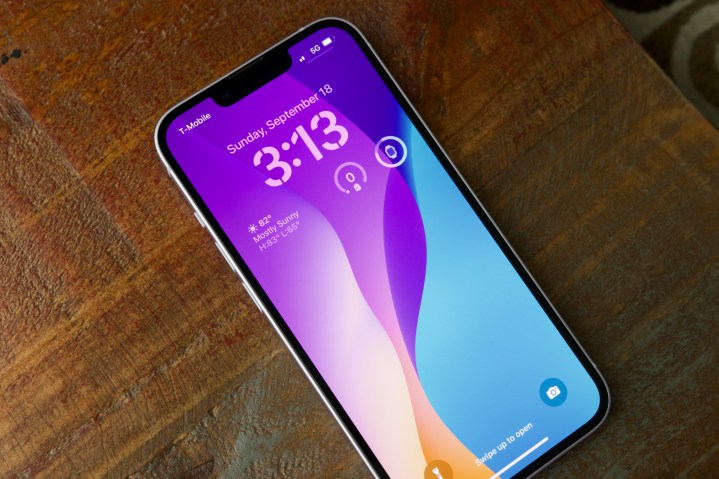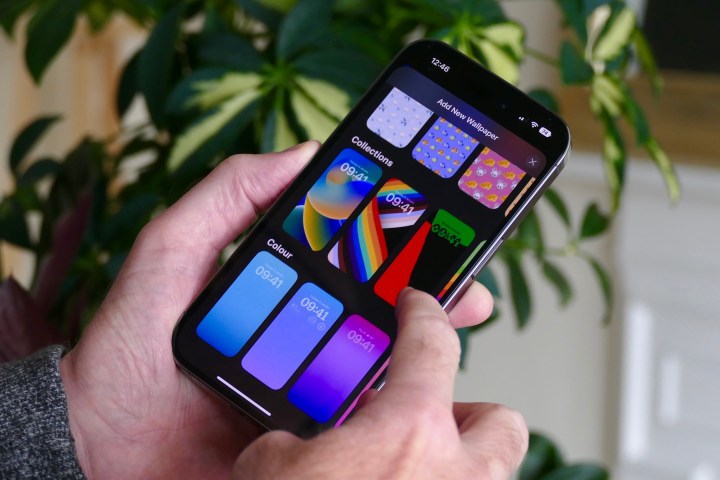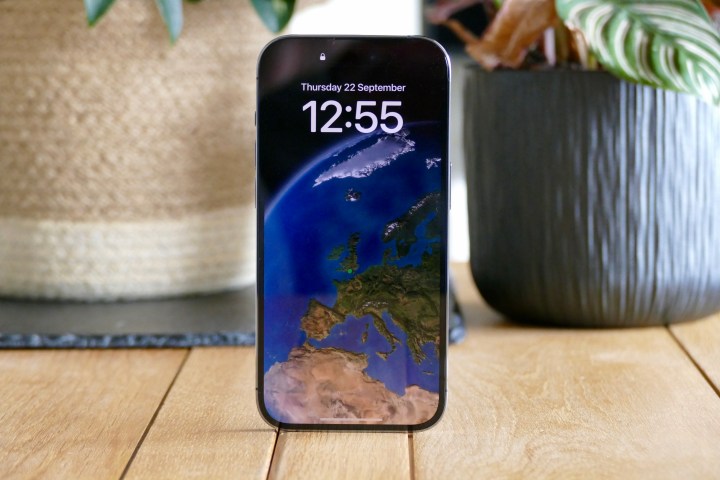The introduction of an always-on display is one of the marquee features of Apple’s 2022 iPhone lineup, allowing the clock, wallpaper, and status widgets to remain visible even when the iPhone is in sleep mode.
Considering that many competing Android smartphones have offered always-on displays for years, it’s taken Apple an unusually long time to embrace this technology. Unfortunately, it hasn’t exactly done this wholeheartedly.

While Apple released four new iPhone 14 models this year, only two gained this improved screen technology. The new always-on display is exclusive to the higher-end iPhone 14 Pro and iPhone 14 Pro Max.
This means that iPhone fans who want an always-on display will have to spring for one of the more expensive iPhone models. Apple’s standard iPhone 14 — and even the larger 6.7-inch iPhone 14 Plus — doesn’t have an always-on display. In fact, they each have a display that’s essentially unchanged from the one found on last year’s iPhone 13.
Apple’s delayed response to always-on screens
It may seem unusual and even a bit silly for Apple to restrict the always-on display to its “Pro” iPhone models, especially considering that this technology has been widely available on Android handsets since at least 2017. Samsung offers an always-on display on everything from the affordable Galaxy A53 to its flagship Galaxy S22 Ultra, and it’s been a staple feature of Google’s smartphones since the Pixel 2 made its debut nearly five years ago.
Further, Apple is no stranger to always-on display technology. It’s been standard on almost every Apple Watch released since the Series 5 came along in 2019.

There’s some evidence that Apple wanted to add an always-on display to the iPhone before now but found its efforts hampered by challenges with its supply chain during the COVID-19 pandemic. The faster 120Hz ProMotion display introduced on last year’s iPhone 13 Pro was initially slated for the 2020 iPhone 12 Pro; however, Apple was forced to change its plans when it couldn’t get its hands on enough components to power those displays amid supply chain shortages caused by the global health crisis.
The variable refresh rate of these premium displays is key to powering an always-on display — at least if manufacturers want to do so without killing their customers’ battery life. Early implementations of always-on displays by companies like Samsung carried a small but measurable hit on the device’s battery, and this is something that Apple almost certainly wanted to avoid.

With the Apple Watch Series 5, Apple added a display that could drop its refresh rate down to as little as 1Hz, which is a fraction of the typical 60Hz refresh rate. This slower rate means that the wearable can only update the screen once per second, saving considerable power. Add a dimming feature for when the screen isn’t in active use, and the impact on battery life is negligible.
However, while the iPhone 13 Pro gained Apple’s ProMotion display technology, it bottomed out at a 10Hz refresh rate. That wasn’t low enough for the power savings that Apple’s designers and engineers were looking for. We’ll probably never know if this was also a pandemic-related compromise, but at the very least, the always-on display would have likely arrived with the iPhone 13 Pro had Apple been able to stick to its original timeline.
How the iPhone 14’s always-on display works
Nevertheless, Apple’s premium ProMotion displays remain exclusive to the iPhone 14 Pro, which suggests that the always-on display could remain a feature of only the higher-end iPhone models for the foreseeable future.
Despite some reports that Apple was considering bringing the 120Hz ProMotion display from the iPhone 13 Pro to the standard iPhone models, this year’s iPhone 14 still packs in the same display as last year’s model. In fact, the display technology of the non-pro iPhone models has remained mostly unchanged since the iPhone 12. It’s gotten a bit brighter, but that’s about it.

Meanwhile, the iPhone 14 Pro moves the needle ahead in some significant ways. Not only does it add an always-on display, but it gets a massive boost in maximum peak brightness. It can now reach 2,000 nits outdoors, which Apple says is the highest peak brightness of any smartphone — double that of the iPhone 13 Pro and 2.5 times more than the iPhone 14.
It’s also worth noting that Apple has taken its time to craft the most advanced always-on display possible that easily matches or even surpasses those of rival smartphones. Sure, Samsung and Google got there first, but those early monochromatic implementations pale compared to the iPhone, which presents a dimmed version of the lock screen in full color, complete with wallpaper and dynamic widgets.
Further, Apple has come up with some clever tricks for turning off the always-on display when your iPhone knows you won’t be looking at it, likely as much for privacy as for power conservation. Put your iPhone 14 Pro face down on a table, in your pocket, or even walk away from it while wearing your Apple Watch, and it will go dark.
Sadly, all these great features aren’t available to folks who opt for the more affordable iPhone 14 or iPhone 14 Plus. It’s still an open question whether next year’s iPhone 15 will get the always-on display. It’s certainly possible, but we wouldn’t bet on it. Apple has been gradually widening the gap between its standard and pro iPhone models; this year, they’re further apart than ever. If this trend continues, the iPhone 15 Pro will be even more exciting, while the iPhone 15 will get another round of smaller updates.
Editors' Recommendations
- Best iPhone deals: Save on iPhone 15, iPhone 15 Pro Max and more
- iPhone SE 4: news, rumored price, release date, and more
- Best iPhone 15 deals: How to get Apple’s latest iPhone for free
- When will Apple release iOS 18? Here’s what we know
- The best iPhone 15 Pro cases in 2024: our 21 favorites




